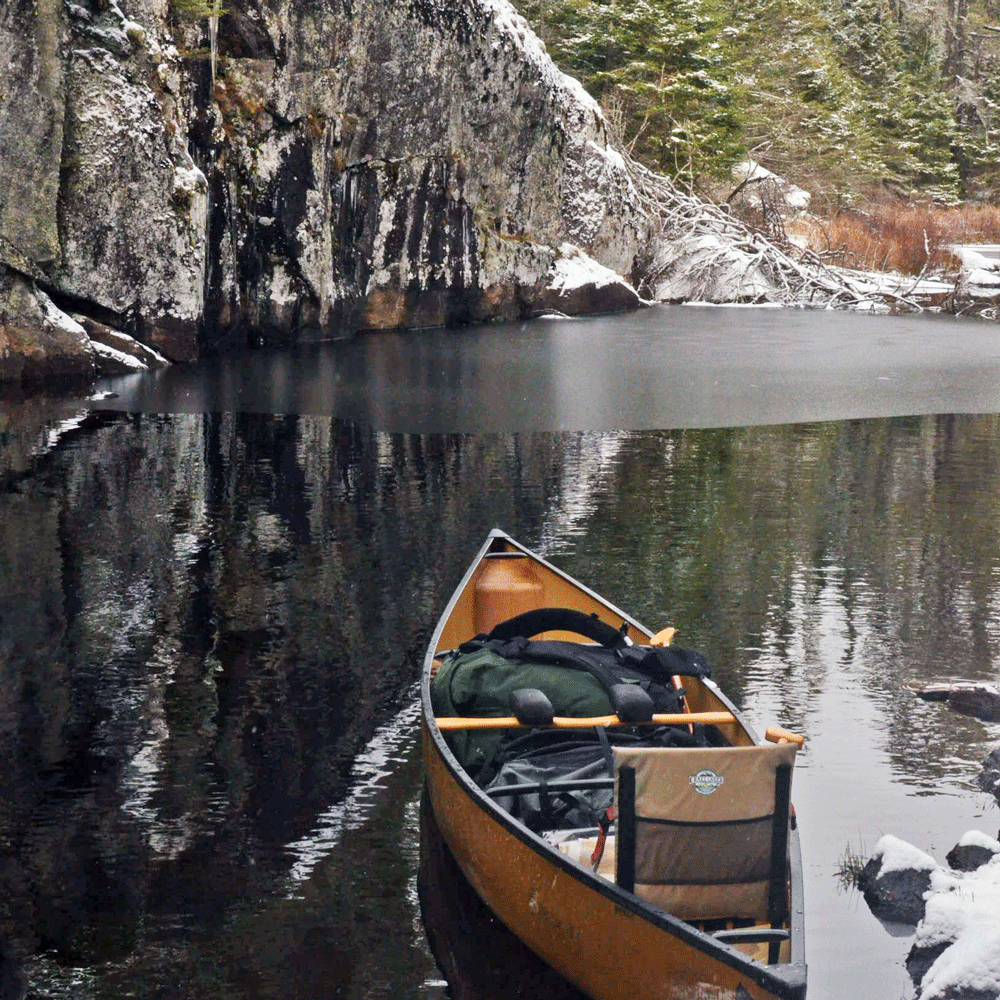Six Rules for BWCAW Portage Etiquette
If you are new to wilderness canoe camping, especially in a heavily used wilderness area like the BWCAW, then the group traffic at some of the busier portages in Canoe Country may come as a shock. Here are six [written and unwritten] rules you should apply the next time you portage on a well-congested portage trail. A little bit of portage etiquette may just help you have a better experience and let the other groups you encounter do the same!
1) How to Use the 9 People/4 Watercraft Rule
The nine-person/ four watercraft rule is pretty clear and straightforward, but there are circumstances that muddy the waters on how to apply it. If a group is currently loading or unloading at a portage landing, please wait on the water. The rule exists to protect the resource and the experience of the people enjoying it, which is why this rule applies at all times. If another group is returning for a second trip across the portage, then I believe you can land with due respect to their gear, and travel across the portage. Be diligent and remember to treat other groups with the respect you are also looking for.

2) Portage Landings are Like "15-Minute" Parking
Think of portage landings as 15-minute loading zones. They exist for you to load and unload your canoe. Are you returning for a second trip across the portage? Set your gear off to the side. Heading off for some sightseeing mid-portage? Find a place off the trail and off the landing to put your canoe and gear. I have been on the Eddy Falls portage when SEVEN other groups were either at the falls, on Knife Lake, or Eddy Lake. Needless to say, it was utter chaos, with canoes and gear everywhere. For the good of other groups and to not mix up gear, if you are not actively loading your canoe, it should be off to the side and organized. Don't be the group "yardsales" on the portage!
3) Right-of-Way Anyone?
Who has the right-of-way mid-portage? Rarely is there room in Canoe Country for two people to walk side-by-side. At some point or another, someone's going to have to pass! Like a person waiting at a crosswalk on a busy road, there is a right and a wrong with some room for discretion. As for me, the right of way on a portage trail ALWAYS goes to the canoe. It's much easier to step off-trail with a pack than a 17' tree-branch-grabber. If two canoes meet mid-trail, have a conversation. Look for an easy place to step sideways off the trail rather than turning sideways. If someone has caught up to you and is moving at a swifter pace, let them pass! There are no passing lanes in Canoe Country, and everyone travels at their own pace. Don't be the reason another group has to change theirs.
4) Acceptable for the Portage
The portage trails are made for portaging. They aren't allowed as a campsite, nor are they made for a mid-day nap or snack breaks (though they can be those things if handled correctly.) If you plan on stopping for a snack or a meal, try to do it on the water or at another site away from the portage if possible. If you must stop on the portage, see rule 2. Don't be the reason another group can't travel through the portage. Place gear neatly on one side of the trail (don't fill both sides), and then take your nap or snack.
5) Mud Shoulnd't Hurt
Wilderness trails are wild. Rangers do what they can to make a safe experience that doesn't detract from the quality of wild spaces. Sometimes, you will find mud or, worse yet, floodwaters over the portage trail. As much as it might seem repulsive, walk through the mud, not around. Wilderness trails are narrow for a reason. Though walking over a down tree or through a muddy spot may seem a hassle, walking around can contribute to deteriorating the resource for years to come. Look for places where a large tree fell and you'll see it: a new trail forming outside the track of the original. The soils are thin, and the plants are sensitive in canoe country. One person going out of their way has a small impact, but people are prone to following the footsteps of others. Don't form new trails on a portage; stay on the track ahead!
6) Look Don't Touch
As much as it may be annoying to admit, you are not the etiquette police. If another group's canoe or gear is scattered haphazardly across the portage landing, as vexing as that may be, don't move other people's gear. Unless you have specifically asked or offered to help them portage, other people's belongings are a look-don't-touch situation. Try what you can to navigate around, be careful not to step on or break something of theirs, and do what you can to lead by example! Not everyone is as aware of their actions as they should be. If you practice these six tips for proper portage etiquette, you have a role in making the trail of the BWCAW safer, neater, and a more pleasant experience for everyone. Have a safe and enjoyable time out there! See you on the trails.
